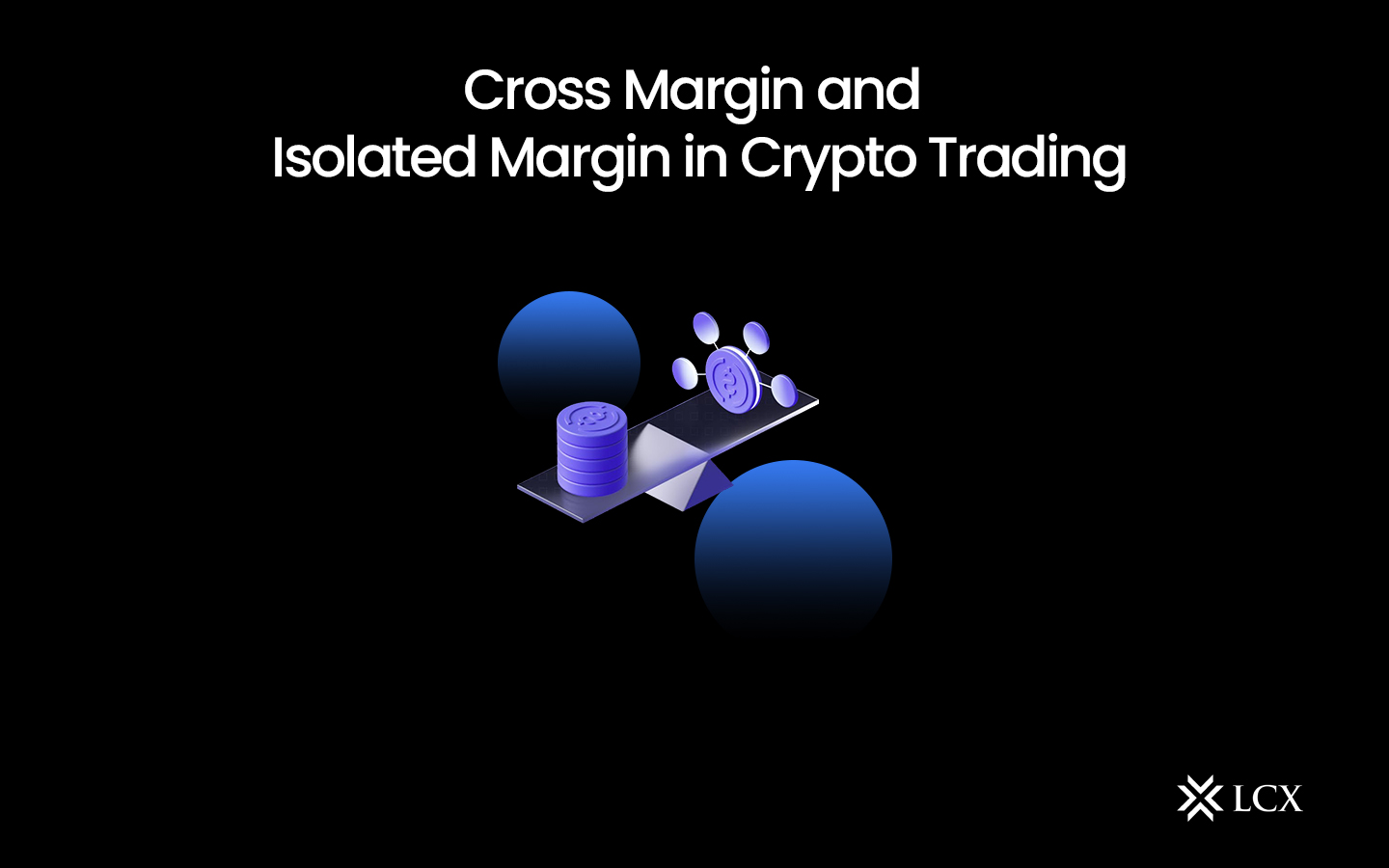Cryptocurrency trading is a dynamic and exciting field that offers numerous opportunities for profit. However, it also comes with significant risks, especially when trading on margin. Margin trading allows traders to borrow funds to increase their trading position size, potentially amplifying both gains and losses. To mitigate these risks and provide traders with more control over their positions, cryptocurrency exchanges offer two main types of margin trading: Cross Margin and Isolated Margin.
Cross margins and isolated margins are two aspects of margin trading. These two mechanisms facilitate vastly dissimilar options, accommodating traders with wildly disparate strategies. Both cross and isolated margins offer lucrative profit opportunities, but it is essential to comprehend the distinction between them.
In margin trading, both cross and isolated margins provide the opportunity to borrow Cryptocurrency from a given exchange platform in order to profit from a price change. In both instances, initial collateral is required to complete the transaction.
With isolated margins, however, you can obtain temporary crypto liquidity by securing only a single margin position. With cross margins, your complete portfolio of margin positions is regarded as a margin position.
What Is Cross Margin in Crypto Trading?
Cross-margin trading is a cryptocurrency trading risk management strategy in which merchants use their entire account balances as collateral for their open positions.
Using the account balance as collateral implies that the entire account balance is at risk to cover potential trading losses. Cross-margining allows for greater leverage, enabling traders to open larger positions with less capital. It carries a greater risk but prevents the liquidation of individual positions by functioning as a buffer with the account balance.
To mitigate risk, margin calls may be issued, and traders must carefully monitor their positions and implement stop-loss orders. Cross-margining is a potent strategy for seasoned traders, but it should be employed with caution and a solid risk management plan. Beginners and those with limited trading experience must fully comprehend the platform’s margin policies and rules.
How Does Cross Margin Work?
Cross margin is not a simple calculation, and it operates on sophisticated algorithms. By spreading margin across accounts, traders can increase their exposure without having to deposit additional capital. Clearinghouses, central counterparties, and brokers determine cross-margin amounts and transfer margin automatically between registered accounts. Cross-margining may be preferred by traders because a single failing position may not be liquidated rapidly when market conditions change. Transferring excess margin from one account to another to cover a minor shortfall in minimum maintenance. Cross-margin aids in the prevention of margin calls and compelled liquidations.
How to Use Cross Margin
Cross-margin is ideal for traders with multiple-margin trading accounts. Cash accounts and margin accounts function differently, and cross versus isolated margin only applies to the latter. Cross margin is generally preferable to isolated margin for traders who are concerned about a single position being stopped out, as it helps to prevent unwarranted forced liquidations. Therefore, a trader must utilize a broker who provides this service.
Cross margin demonstrates its superiority over isolated margin in volatile markets. When there are extreme movements in a single security, it is difficult to keep track of the margin requirements for individual positions with cross margin. Cross-margining can automatically calculate quantities and transfer excess margin to other accounts that require it.
What Is an Isolated Margin in Crypto Trading?
In the world of cryptocurrencies, isolated margin trading is a risk management strategy in which traders provide collateral for every position they initiate.
In addition to protecting other positions and the total account balance from potential losses in a single transaction, this method permits precise control over the risk associated with each trade. Each position is backed by a fixed quantity of collateral, and only the collateral assigned to that position is at risk if the trade goes against the trader.
By isolating risk, losses from one position cannot extend to other positions or the account’s total balance. With isolated margin, leverage is still permitted, but traders can adjust the leverage for each position, enabling a more individualized risk management strategy.
In isolated margin trading, it is vital to carefully manage position sizes and collateral allocation in order to avoid overleveraging or underfunding positions and to safeguard the trader’s entire portfolio. In addition, certain exchanges may implement margin calls that require traders to increase their collateral or adjust their position size if their losses exceed a predetermined threshold.
How Does Isolated Margin Work?
Isolated margin functions by allocating a margin amount to a specific position. Sometimes, volatile and speculative positions are excellent candidates for the application of isolated margin. It can be useful when you do not want other portfolio holdings to be affected by a change in the position’s value or margin requirements.
How to Use Isolated Margin
Traders have the ability to modify their individual margin amounts, which can be advantageous when managing portfolio positions. When you want greater flexibility with a single position and to limit a potential loss to a small portion of your account, you should consider isolated margin. Isolated margin versus cross margin can also necessitate a nimbler market response, as you may need to actively alter the isolated margin amount.
Pros and Cons of Cross Margin
Cross-margin trading simplifies risk management, but the use of the entire account balance as collateral entails the risk of substantial losses.
Positively, cross-margining simplifies risk management by using the entire account balance as collateral and may prevent individual holdings from being liquidated prematurely.
It also affords the opportunity for greater profits as a result of increased leverage. However, every transaction involving the entire account balance could result in astronomical losses or account liquidation. In addition, the lack of granularity in risk control and the potential for margin calls can make it difficult to implement precise risk management strategies and effectively diversify.
In addition, cross-margining may impede diversification and expose traders to concentrated risk if they are unwilling to invest their entire account balance in multiple positions. If a trader invests their entire account balance in a single, highly volatile cryptocurrency and that asset experiences a significant price drop, the trader’s entire account balance could be wiped out, illustrating the risk of not diversifying across different assets or positions.
Pros and Cons of Isolated Margin
Isolated margin trading allows for precise risk management and diversification, but it requires careful monitoring of trading positions and may require more capital than cross-margin trading.
Individualised margin trading permits traders to precisely manage risk by assigning specific collateral quantities to individual transactions. This granularity reduces the likelihood that one transaction will negatively affect others by limiting losses to the collateral provided for each trade.
In addition, isolated margin trading promotes efficient diversification by permitting traders to distribute their assets across numerous positions and assets, thereby reducing the risk of concentration.
However, the isolated margin trading strategy is somewhat complex, especially for traders with numerous outstanding transactions. Managing collateral for multiple positions can be challenging and may require continual focus. In addition, compared to cross-margin trading, in which the total account balance serves as collateral for all positions, allocating collateral individually may necessitate more capital.
Inadequate collateral for any given position may result in margin calls or partial position closures, necessitating continuous monitoring and precise risk management; therefore, traders must remain vigilant. Isolated margin allow for individualized risk management, but position management and monitoring must be meticulous.
Cross Margin vs. Isolated Margin: Key Differences
Cross-margin trading facilitates risk management while increasing overall risk, as opposed to isolated margin, which offers greater control and diversification but requires more active management.
Cross-margin trading simplifies risk management but may expose the entire account to substantial losses because the entire account balance is used as collateral for all positions. Isolated margin, on the other hand, enables traders to designate specific amounts of collateral to individual positions, providing precise risk management and facilitating diversification.
In volatile markets, cross-margining can cause holdings to be liquidated prematurely, whereas an isolated margin reduces the likelihood of one position’s losses influencing others. In addition, isolated margin provides more flexible options for leverage, albeit at the expense of a greater degree of complexity in managing multiple positions and collateral allocations.
Here is a brief summary of the distinctions between isolated and cross margins:
| Cross-Margin | Isolated-Margin | |
| Collateral Allocation | Whole Balance | Individualized |
| Risk Control | Less Precise | Granular |
| Diversification | Discouraged | Encouraged |
| Liquidation Risk | Less Likely | Mitigated |
| Leverage | High-Risk | Customizable |
The choice between cross-margin and isolated margin ultimately depends on a trader’s risk tolerance, trading strategy, and diversification goals.
Conclusion
In the world of cryptocurrency trading, margin trading can be a powerful tool for amplifying profits but also comes with increased risks. Understanding the differences between Cross Margin and Isolated Margin is crucial for making informed trading decisions.
Traders should choose the margin type that aligns with their risk tolerance, experience level, and trading strategy. Cross Margin offers higher leverage and automatic risk management but can expose traders to greater risk. Isolated Margin, on the other hand, provides more control over risk and is ideal for diversification and risk management.
Ultimately, successful margin trading in the crypto market requires a solid understanding of these margin types, a well-thought-out trading plan, and a disciplined approach to risk management. By choosing the right margin type and employing effective risk mitigation strategies, traders can navigate the crypto market with confidence and increase their chances of success.










